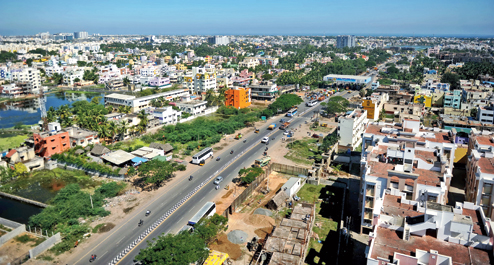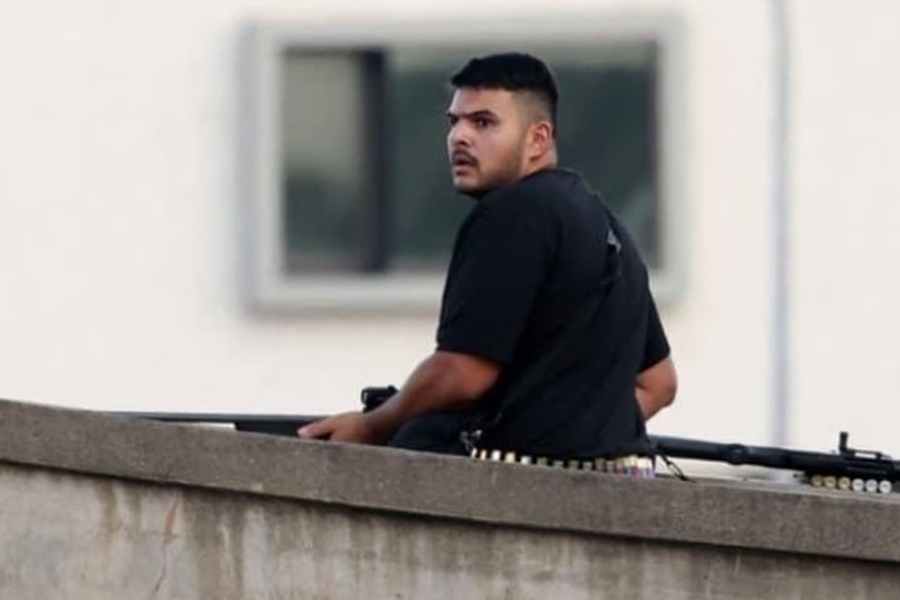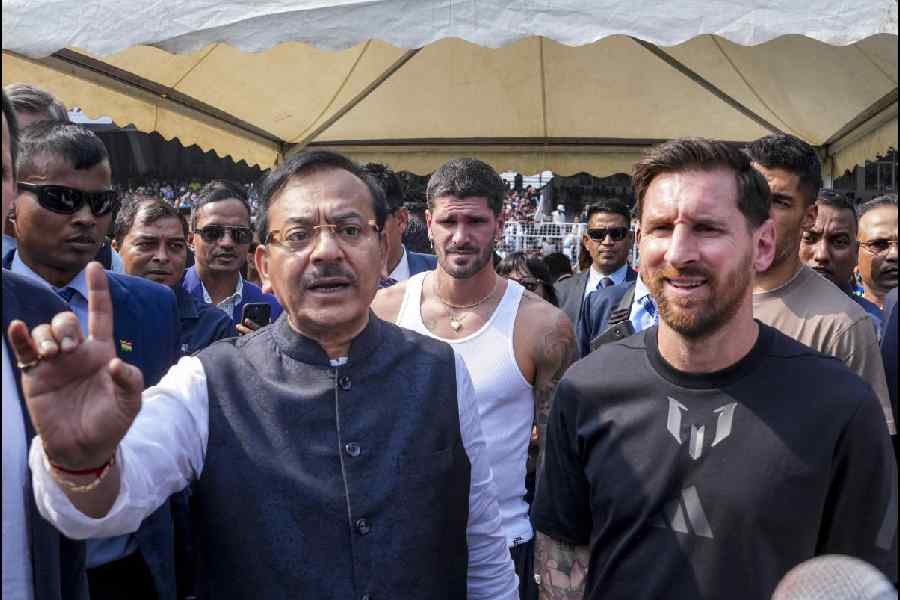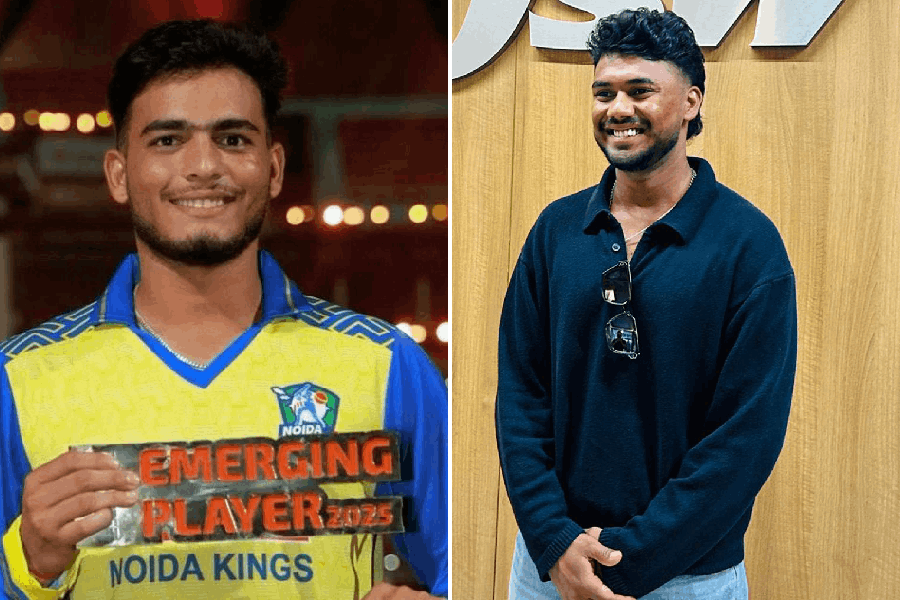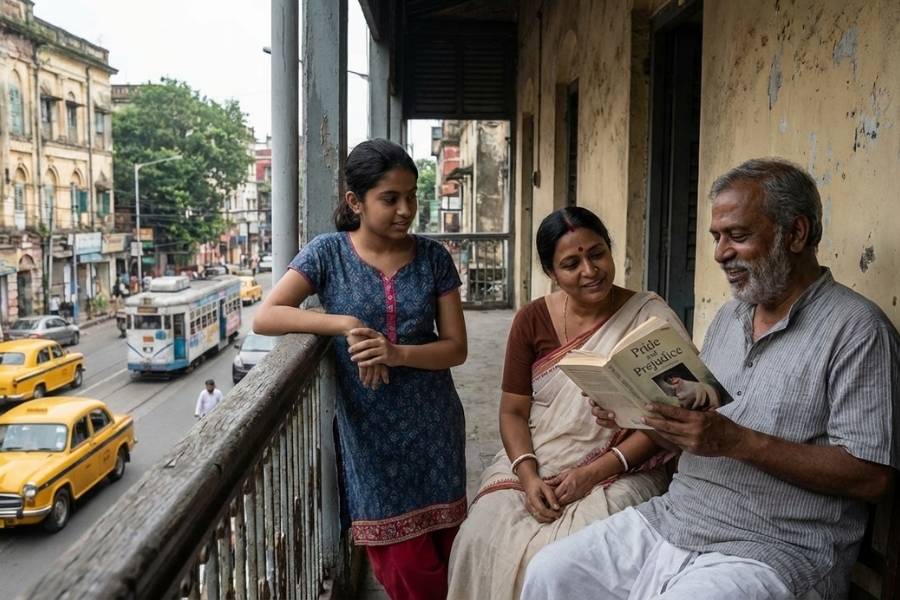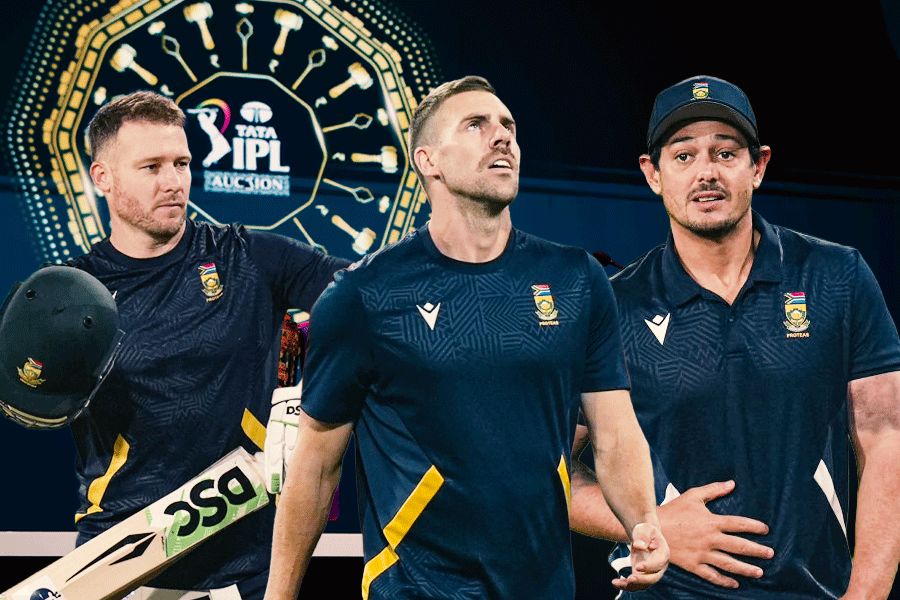-

Pic: S. Sondaranayagi
She enjoys her thair sadam — curd rice — at the end of every meal. Like any south Indian girl, she dutifully learnt Bharatanatyam when she was growing up. But then Kaveri Lalchand considers herself a 'Madrasi', even though she is a third-generation Sindhi from Chennai.
'I am not judged when I drive around madly in my Maruti Gypsy with my wild, curly hair flying in the wind,' says the 40-something actor-director-dancer. And she loves it when maamis — the traditional sari-clad south Indian aunties — participate in discussions on her plays on 'delicate and controversial' topics.
Lalchand's grandfather came to what was then Madras in the early 1920s from Hyderabad in Sindh and set up his textile firm Lalchand Kewalram & Sons. His granddaughter has her own clothing label 'K' which retails in high-fashion boutiques.
She is among the hundreds of thousands of people who have seamlessly melded into the Tamilian social fabric of Chennai. Chennai, for them, is home.
As it celebrates its 375th year, the city no longer just symbolises 'idli-vada-dosa' or Rajinikanth jokes or the ugliest film villains or girls with mallippu-decked plaited hair saying ayayyo. Instead, this bustling metropolis with 8.6 million people is a medley of different communities, including a sizable expat community.
Multi-cuisine outlets offering continental breakfasts merrily jostle for space with Saravana Bhavans — famous for their south Indian snacks and thalis. Kanjeevarams vie with kurtis; Carnatic classical with Celtic music and Bharatanatyam with belly dance.
South Indians may love to pin many of their problems — from traffic woes and overcrowding to bad behaviour in public places — on the 'migrant', but they have also been open and accommodating to the settlers.
'If they were not accepting of us we would not have survived here,' points out M. Goutamchand Bohara, a Marwari chartered accountant and chairman of the Rajasthani Association in Tamil Nadu.
-

Chennai is traditional, not conservative
Nanditha Krishna
Historian and environmentalist
Marwaris, he elaborates, came to Madras 200 years ago. Gambhir Mul Sethia was one of the first Marwaris who walked from Rajasthan to Madras via Bombay — a distance of 2,200km. 'He came with the English army probably as a provisions supplier and stayed on,' Bohara, who came in 1975 following his brother to the city, adds. Many in the community started as moneylenders and were known as the Sethia bankers.
In 2001, Chennai had 123 communities speaking different languages. The Telugu community leads the pack among the migrant communities, followed by Urdu speaking communities, Malayalees and Hindi speaking Marwaris. The Saurashtrians, Gujaratis, Marathis, Kannadigas and Bengalis are fewer in numbers, going by the Census of India 2001 figures.
'I came to Madras because I wanted to further my job prospects and earn more,' says artist Chunilal Dutta Gupta, who headed for the city in 1957 when he was offered a job in the newly set up branch of the advertisement agency J. Walter Thompson. And in tune with the 'disciplined and hospitable' south Indian culture, he stayed on until it became too late to go back.
But Dutta Gupta, who has now retired, has no regrets. 'My children have grown up here and are doing well. I bought a house here and I am more Madrasi than Bengali,' he says.
The city chronicler and historian S. Muthiah points out that a large section of Bengalis came to Chennai to work in the south Indian film industry in the 1930s as cine lab technicians, make-up artistes and studio producers. In fact, a Bengali called Haribabu was so sought after that he became the personal make-up man of actors Sivaji Ganesan and Savitri.
Bengalis also headed educational institutes such as the city's Presidency College. The first Indian principal of the Government College of Arts and Crafts in Chennai was the artist Debi Prasad Roy Chowdhury, whose work of sculpture, the Triumph of Labour at Marina Beach, is an important landmark of the city.
In his book City of Madras, C.S. Srinvasachari writes that the migration of people to Madras in the 20th century was a 'migration of despair rather than hope'. The Punjabis, Sindhis and Bengalis turned to Madras to escape the horrors of Partition.
Years later, Bengalis came in large numbers as professionals. Today, Bengalis have diversified into businesses, including jewellery manufacturing and floriculture. This was followed by new waves of migration — including people who joined the information technology industry.
Many in the city acknowledge the role played by the settlers. Bohara holds that Marwaris are no longer seen as 'bloodsuckers' in Chennai because of the number of charitable institutions they run. The mushrooming of restaurants offering various kinds of regional cuisine is seen as a sign of the city's multicultural ethos.
But a section believes that despite the changes — the malls, the discos and the pubs — the core of the city is still conservative.
'Madrasis revel in their institutions such as the Kalakshetra, their music sabhas, the Theosophical Society and their prestigious educational institutions which have thrown up Nobel Prize winners. And of course, there is Madras coffee and Marina Beach,' says Pradeep Chakravarthy, who has authored books on ancient temples in south India.
Yet others argue that Chennai is not the conservative city that people see it as. 'Chennai is traditional, not conservative,' stresses Nanditha Krishna, historian, environmentalist and director of the C.P. Arts Foundation. 'I am traditional because I follow the traditions handed down to me from generations like wearing my Kanchi cotton saris, having a tulsi plant in my courtyard, having oil baths and listening to slokas and prayers. But I am not conservative in that I exclude people who are not born or follow my way of life,' says the author of Chennai Then and Now.
Old-timers hold that there has been a quiet osmosis — with the Tamilian accepting new trends, such as salwar-kameezes that many Tamilian women today wear, and the settler embracing Tamilian ways of life, such as food.
'I love my dosas,' exults engineering student Vedanth Sundrani, a third generation Kutchi in Chennai. Though the 20-year-old had a Kutchi upbringing, he says he feels '50 per cent' Tamilian. 'People call us Madrasis outside because of our Tamilian accent,' he says.
Vedanth's grandfather came to Madras in 1955 to escape from the family speculation business back in Bombay. Sanat Kumar, 77, is grateful to the 'soft' south Indians for not treating him like an outsider. Running a successful waste paper recycling and packaging unit, he feels they have imbibed the soberness of Madras culture.
Many of the settlers believe they straddle two cultures. 'I maintain my Bengali culture and follow my traditions but I feel out of place in Bengal,' says city surgeon Debashish Roy, who speaks fluent Tamil. Dr Roy's father moved to Madras after a Marwari told him that the city lacked pharmaceutical companies. Dr Roy grew up in a Tamilian Brahmin dominated area in Madras and has celebrated all his Durga Pujas at the Bengal Association in Chennai.
But Chennaiites point out that despite the changes, the communities are still to assimilate fully. Most people, for instance, marry within their own community. It took hard-core Kutchi Sanat Kumar some time to accept his daughters marrying south Indians.
Kaveri, however, will have none of that. She believes that the spirit of Chennai is 'diverse and progressive' yet rooted in tradition.
She recalls how her grandfather — popularly known as Lala — embraced the city as his own. A familiar face at all club balls and parties, he owned 40 racehorses and was known as Lalchand Ghodewala (horse-owner) in the race club. Kaveri adds that she is still referred to as Lala's granddaughter.
'Chennai is a place which allows people to be who they are,' she says.
THE BIG BASH
-

Painting by James Hunter showing the interior of Fort St George
Madras started as a mere 'sandy spit of surf-wracked beach'. Scouting for a settlement on the Coromandal coast, East India Company officials on the 'quest for excellent long cloath' bought a three-mile strip of land from a local nayak of the dying Vijayanagar Empire in 1639. This deal was ostensibly struck on August 22.
August 22 is now Madras Day — so coined by a small group of people comprising historian S. Muthiah, publisher-editor Vincent D' Souza and journalist Sashi Nair.
This year, as the city completes 375 years, special events have been organised. The Madras Week starting August 17 will feature exhibitions, talks, contests, festivals and book launches.
'It is a voluntary affair. People come forward to conduct events,' D'Souza says.
The celebrations will see the release of Muthiah's Madras Rediscovered (seventh edition) and Tales of Old and New. Pradeep Chakravarthy, author of books on ancient south Indian temples, is planning a walk around stone sculptures inside the Madras museum. Collector V. Narayan Swami will introduce original water colours by British artists, portraits and Fort St George.
It was at Fort St George, where the government functions from, that the city was born. After purchasing the narrow strip of sandy land, the British built a warehouse on it and grandly called it Fort St George. And that's grown into a megapolis called Chennai.

